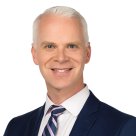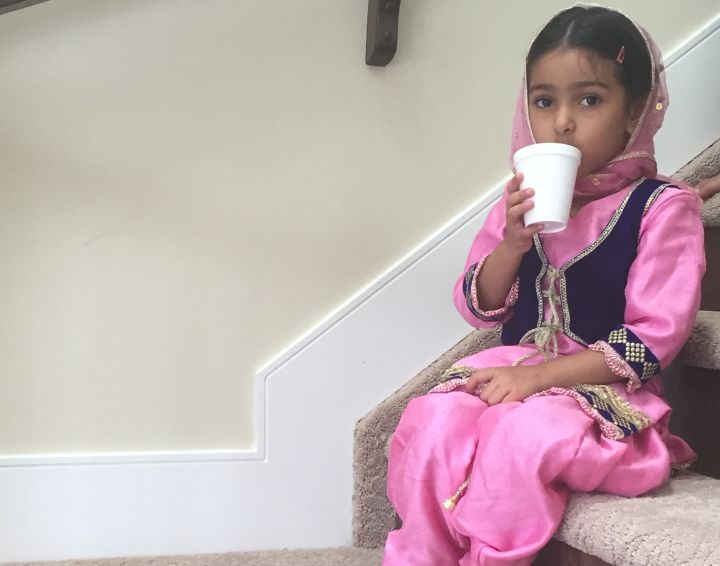EDMONTON – Less than two months after four-year-old Amber Athwal slipped into a coma during a dental procedure, one expert in dental sedation says dentists need to follow higher standards and professional organizations need to stop resisting change.

Michael Dare owns Sea to Sky Dental-ed, a Vancouver-based company that trains dentists in safe sedation.
On Friday at the Shaw Conference Centre, Dare spoke to a group of Edmonton dentists about sedation. He told them the practice is safe as long as it’s being done properly. But he says, too often, it isn’t being done in a way he considers proper.
“In our talk today, I said: ‘you are doing medicine when you do these services,'” Dare said. “You should be held to the exact same bar height as medical anesthesiologists.”
There are differences between the two groups.
In Alberta and Ontario, dentists, by themselves, can sedate patients and perform a dental procedure at the same time. If a patient requires surgery at a hospital, an anesthesiologist must be present during the procedure.
Dare says it is critical that someone with appropriate training is constantly monitoring a patient while he or she is unconscious.
While sedated, a patient’s tongue could relax and block the airway. There is also the chance a patient could become so sedated that the body forgets to keep breathing.
There is equipment that can help doctors manage such issues.
Dare says the gold-standard piece of equipment is known as an end-tidal CO2 monitor. It pulls in exhaled carbon dioxide from a patient and measures it. If a patient stops breathing, the monitor sounds an alarm. The piece of equipment costs about $2,000 and is required in all hospital operating rooms. It is not required for dentists.
Dare wants that piece of equipment to become mandatory. He also wants it to be illegal for dentists to perform procedures alone. Despite lobbying various professional organizations, those changes have not been made.
“I am just frustrated beyond imagination,” Dare said. “There are a lot of people who want change. But there seems to be a lot of people who are resisting change. There could be financial aspects to it.”
Dare points to a 2012 incident in Kamloops, B.C. as one example of his frustration. A young woman was having her wisdom teeth pulled and the oral surgeon employed deep sedation. During the procedure, monitors showed the patient was suffering serious cardiac trouble and the doctor continued extracting the tooth. The patient ultimately suffered brain damage.
Four years after that case, Dare says he is upset because the College of Dental Surgeons of B.C. still has not made changes which he thinks would stop another incident that he describes as “completely preventable.”
Alberta’s Dental Association & College says it has an ongoing commitment to public protection and public safety and it is always looking at what is best for patients.
“We have a commitment to regularly review our standard of practice,” Randall Croutze, CEO of the Aberta Dental Association and College, said. “I would suggest that review would include the area of sedation.”
For her part, Amber Athwal remains in the Glenrose hospital. Her father, Aman Preet Singh, tells Global News that Amber is “opening her eyes.” But Singh says that she still does not respond to her parents.
When asked if there has been any improvement, Singh said, “Not much. She’s moving her legs but it’s not kind of proper movements.”
Amber has been in hospital since Sept. 7 and family members says doctors told them an MRI showed the girl has a brain injury, although the severity of the injury has not yet been established.
READ MORE – Edmonton family says little girl left in coma after dental visit.
The Alberta Dental Association and College continues to investigate Athwal’s case. Dr. Croutze has not said when that review will be complete.
“In terms of timeline,” Croutze said, “we want to balance our ability to provide a thorough review and have the correct information.”
According to the dental regulatory authority, there were 44,680 dental procedures in Alberta that required general anesthesia in non-hospital facilities in 2015. Of those, it said 36,003 were
performed on adult patients and 8,677 were performed on pediatric patients.
EDITOR’S NOTE: This article has been changed. The original article posted on Oct. 28 said Michael Dare’s concerns were with how dentists could perform sedation. Instead, his concerns lie with how dentists could perform deep sedation and general anesthesia. The article was updated on Oct. 31.




Comments